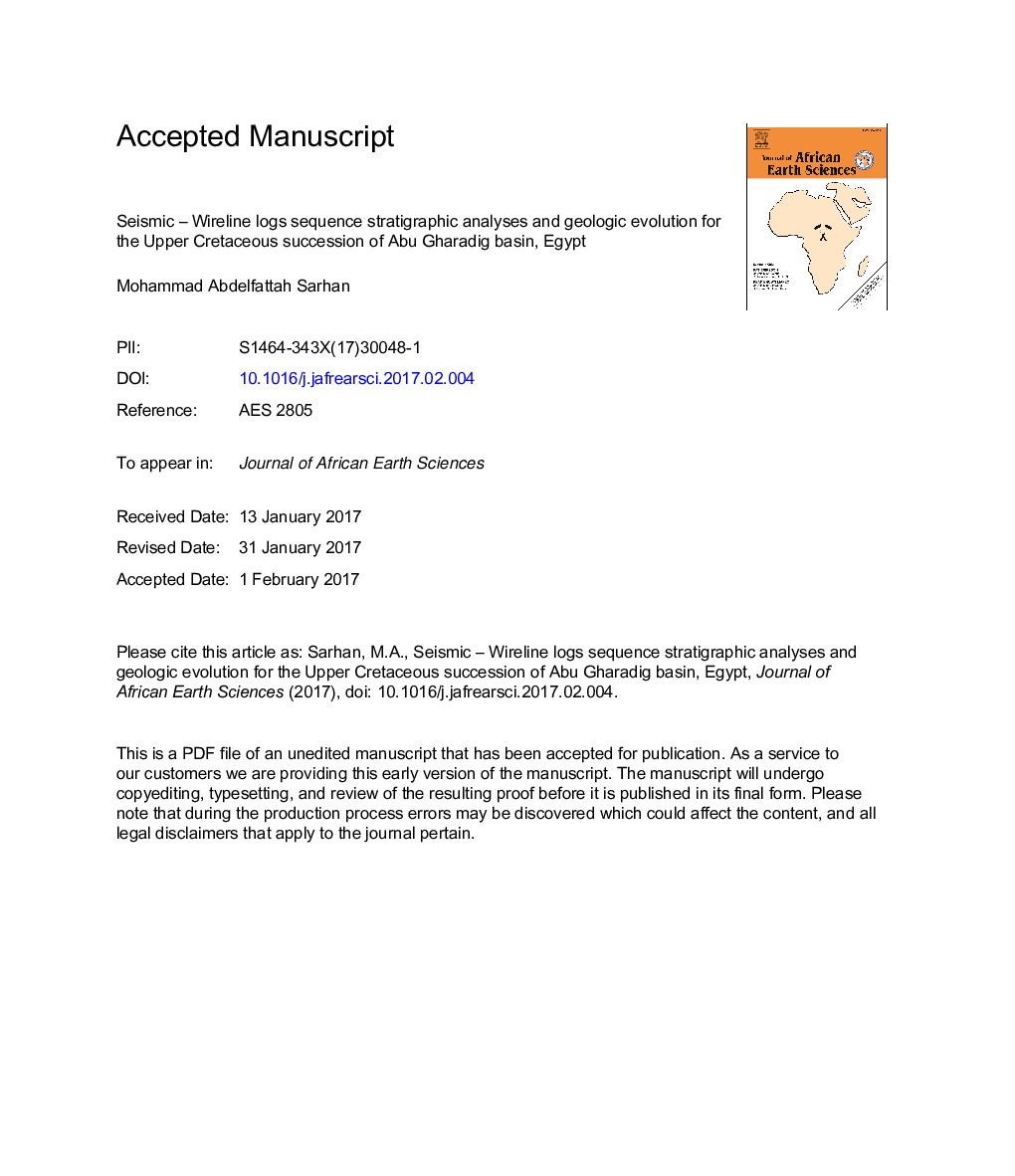| کد مقاله | کد نشریه | سال انتشار | مقاله انگلیسی | نسخه تمام متن |
|---|---|---|---|---|
| 5785709 | 1640179 | 2017 | 38 صفحه PDF | دانلود رایگان |
عنوان انگلیسی مقاله ISI
Seismic - Wireline logs sequence stratigraphic analyses and geologic evolution for the Upper Cretaceous succession of Abu Gharadig basin, Egypt
ترجمه فارسی عنوان
لرزه نگاری - تجزیه و تحلیل سلسله مراتبی و تکاملی ژئولوژیک دنباله پیوندی خطی برای جانشینی کرتاسه بالایی حوضه ابوغرادیق، مصر
دانلود مقاله + سفارش ترجمه
دانلود مقاله ISI انگلیسی
رایگان برای ایرانیان
کلمات کلیدی
لرزه ای، سیاهههای مربوط چینهشناسی دنباله، تکامل زمین شناسی، کرتاسه بالا حوضه ابو غرادیق، مصر،
موضوعات مرتبط
مهندسی و علوم پایه
علوم زمین و سیارات
زمین شناسی
چکیده انگلیسی
The Upper Cretaceous megasequence in the northern part of the Egyptian Western Desert has been classified into four 2nd order depositional sequences. These sequences started with the Cenomanian SQ-I topped by the Turonian - Santonian SQ-II. However, both SQ-III and SQ-IV represent the Campanian- Maastrichtian time span. The interpreted 2nd order SQ-I and SQ-II have been further subdivided into six smaller 3rd order sequences (SQ-1 to SQ-6). The depositional history started during the Early Cenomanian times, characterized by wide marine invasion enabled the deposition of the shallow marine Bahariya Formation (SQ-1). The Upper Cenomanian times, witnessed a rapid subsidence, simultaneously with new marine transgressive phase. This is resulted in the deposition of SQ-2, consuming the entire sediments of the Abu Roash G Member. During the Turonian - Coniacian times the northern parts of Egypt showed successive oscillating transgressive - regressive marine cycles led to equivocal sedimentary bodies of the Turonian-Coniacian Abu Roash Formation (SQ-3, SQ-4, and SQ-5). During the Santonian age, the northern parts of Egypt were subjected to tectonic crustal shortening, producing large scale folds. As a result, a new tectonically-overprinted marine depositional cycle started and marked by rapid phase of basin subsidence. This was accompanied by a deep marine invasion covered most of the northern parts of Egyptian lands, depositing the lower parts of the Khoman- B (SQ-6) under transgressive depositional conditions. By the end of Santonian cycle, the upper parts of the Khoman Formation B Member was deposited during a gradual, and slow relative sea level drop ending the deposition of SQ-6. At the beginning of the Campanian - Maastrichtian times, a new widespread sea-level rise associated with basin subsidence. Accordingly, two successive depositional cycles were thus initiated, forming SQ-III and SQ-VI sequences separated by unconformity type-2 boundary (SB-8).
ناشر
Database: Elsevier - ScienceDirect (ساینس دایرکت)
Journal: Journal of African Earth Sciences - Volume 129, May 2017, Pages 469-480
Journal: Journal of African Earth Sciences - Volume 129, May 2017, Pages 469-480
نویسندگان
Mohammad Abdelfattah Sarhan,
